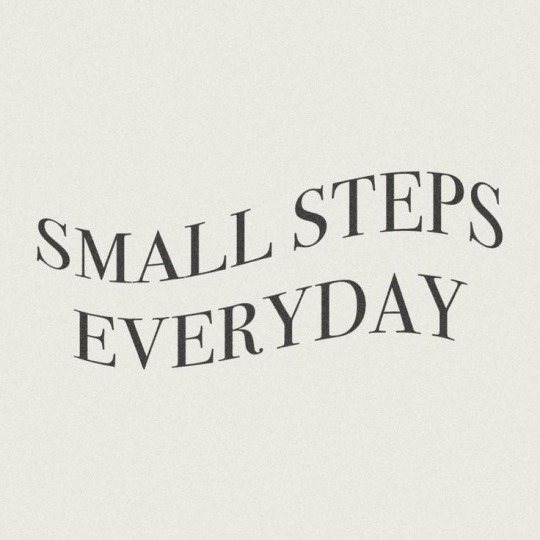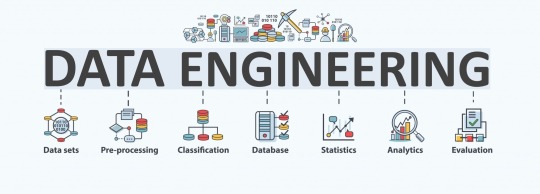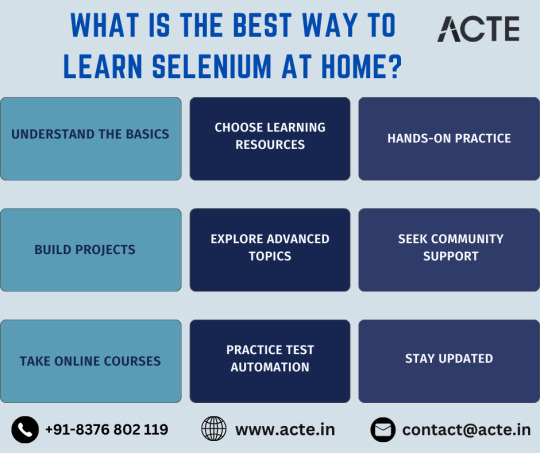#online java test
Explore tagged Tumblr posts
Text
AI Automated Testing Course with Venkatesh (Rahul Shetty) Join our AI Automated Testing Course with Venkatesh (Rahul Shetty) and learn how to test software using smart AI tools. This easy-to-follow course helps you save time, find bugs faster, and grow your skills for future tech jobs. To know more about us visit https://rahulshettyacademy.com/
#ai generator tester#ai software testing#ai automated testing#ai in testing software#playwright automation javascript#playwright javascript tutorial#playwright python tutorial#scrapy playwright tutorial#api testing using postman#online postman api testing#postman automation api testing#postman automated testing#postman performance testing#postman tutorial for api testing#free api for postman testing#api testing postman tutorial#postman tutorial for beginners#postman api performance testing#automate api testing in postman#java automation testing#automation testing selenium with java#automation testing java selenium#java selenium automation testing#python selenium automation#selenium with python automation testing#selenium testing with python#automation with selenium python#selenium automation with python#python and selenium tutorial#cypress automation training
0 notes
Text
"A 2019 sighting by five witnesses indicates that the long-extinct Javan tiger may still be alive, a new study suggests.
A single strand of hair recovered from that encounter is a close genetic match to hair from a Javan tiger pelt from 1930 kept at a museum, the study shows.
“Through this research, we have determined that the Javan tiger still exists in the wild,” says Wirdateti, a government researcher and lead author of the study.
The Javan tiger was believed to have gone extinct in the 1980s but only officially declared as such in 2008...
Ripi Yanuar Fajar and his four friends say they’ll never forget that evening after Indonesia’s Independence Day celebration in 2019 when they encountered a big cat roaming a community plantation in Sukabumi, West Java province.
Immediately after the brief encounter, Ripi, who happens to be a local conservationist, reached out to Kalih Raksasewu, a researcher at the country’s National Research and Innovation Agency (BRIN), saying he and his friends had seen either a Javan leopard (Panthera pardus melas), a critically endangered animal, or a Javan tiger (Panthera tigris sondaica), a subspecies believed to have gone extinct in the 1980s but only officially declared so in 2008.
About 10 days later, Kalih visited the site of the encounter with Ripi and his friends. There, Kalih found a strand of hair snagged on a plantation fence that the unknown creature was believed to have jumped over. She also recorded footprints and claw marks that she thought resembled those of a tiger.
Kalih then sent the hair sample and other records to the West Java provincial conservation agency, or BKSDA, for further investigation. She also sent a formal letter to the provincial government to follow up on the investigation request. The matter eventually landed at BRIN, where a team of researchers ran genetic analyses to compare the single strand of hair with known samples of other tiger subspecies, such as the Sumatran tiger (Panthera tigris sumatrae) and a nearly century-old Javan tiger pelt kept at a museum in the West Java city of Bogor.
“After going through various process of laboratory tests, the results showed that the hair sample had 97.8% similarities to the Javan tiger,” Wirdateti, a researcher with BRIN’s Biosystemic and Evolutionary Research Center, said at an online discussion hosted by Mongabay Indonesia on March 28.
The discussion centered on a study published March 21 in the journal Oryx in which Wirdateti and colleagues presented their findings that suggested that the long-extinct Javan tiger may somehow — miraculously — still be prowling parts of one of the most densely populated islands on Earth.
Their testing compared the Sukabumi hair sample with hair from the museum specimen collected in 1930, as well as with other tigers, Javan leopards and several sequences from GenBank, a publicly accessible database of genetic sequences overseen by the U.S. National Institutes of Health.
The study noted that the supposed tiger hair had a sequence similarity of 97.06% with Sumatran tigers and 96.87% with Bengal tigers. Wirdateti also conducted additional interviews with Ripi and his friends about the encounter they’d had.
“I wanted to emphasize that this wasn’t just about finding a strand of hair, but an encounter with the Javan tiger in which five people saw it,” Kalih said.
“There’s still a possibility that the Javan tiger is in the Sukabumi forest,” she added. “If it’s coming down to the village or community plantation, it could be because its habitat has been disturbed. In 2019, when the hair was found, the Sukabumi region had been affected by drought for almost a year.” ...
Didik Raharyono, a Javan tiger expert who wasn’t involved in the study but has conducted voluntary expeditions with local wildlife awareness groups since 1997, said the number of previous reported sightings coupled with the new scientific findings must be taken seriously. He called on the environment ministry to draft and issue a policy on measures to find and conserve the Javan tiger.
“What’s most important is the next steps that we take in the future,” Didik said."
-via Mongabay, April 4, 2024
#tigers#tiger#endangered species#extinction#conservation#environment#extinct animals#de extinction#indonesia#java#big cats#wild animals#good news#hope
696 notes
·
View notes
Text
back to basics


mostly free resources to help you learn the basics that i've gathered for myself so far that i think are cool
everyday
gcfglobal - about the internet, online safety and for kids, life skills like applying for jobs, career planning, resume writing, online learning, today's skills like 3d printing, photoshop, smartphone basics, microsoft office apps, and mac friendly. they have core skills like reading, math, science, language learning - some topics are sparse so hopefully they keep adding things on. great site to start off on learning.
handsonbanking - learn about finances. after highschool, credit, banking, investing, money management, debt, goal setting, loans, cars, small businesses, military, insurance, retirement, etc.
bbc - learning for all ages. primary to adult. arts, history, science, math, reading, english, french, all the way to functional and vocational skills for adults as well, great site!
education.ket - workplace essential skills
general education
mathsgenie - GCSE revision, grade 1-9, math stages 1-14, provides more resources! completely free.
khan academy - pre-k to college, life skills, test prep (sats, mcat, etc), get ready courses, AP, partner courses like NASA, etc. so much more!
aleks - k-12 + higher ed learning program. adapts to each student.
biology4kids - learn biology
cosmos4kids - learn astronomy basics
chem4kids - learn chemistry
physics4kids - learn physics
numbernut - math basics (arithmetic, fractions and decimals, roots and exponents, prealgebra)
education.ket - primary to adult. includes highschool equivalent test prep, the core skills. they have a free resource library and they sell workbooks. they have one on work-life essentials (high demand career sectors + soft skills)
youtube channels
the organic chemistry tutor
khanacademy
crashcourse
tabletclassmath
2minmaths
kevinmathscience
professor leonard
greenemath
mathantics
3blue1brown
literacy
readworks - reading comprehension, build background knowledge, grow your vocabulary, strengthen strategic reading
chompchomp - grammar knowledge
tutors
not the "free resource" part of this post but sometimes we forget we can be tutored especially as an adult. just because we don't have formal education does not mean we can't get 1:1 teaching! please do you research and don't be afraid to try out different tutors. and remember you're not dumb just because someone's teaching style doesn't match up with your learning style.
cambridge coaching - medical school, mba and business, law school, graduate, college academics, high school and college process, middle school and high school admissions
preply - language tutoring. affordable!
revolutionprep - math, science, english, history, computer science (ap, html/css, java, python c++), foreign languages (german, korean, french, italian, spanish, japanese, chinese, esl)
varsity tutors - k-5 subjects, ap, test prep, languages, math, science & engineering, coding, homeschool, college essays, essay editing, etc
chegg - biology, business, engineering/computer science, math, homework help, textbook support, rent and buying books
learn to be - k-12 subjects
for languages
lingq - app. created by steve kaufmann, a polygot (fluent in 20+ languages) an amazing language learning platform that compiles content in 20+ languages like podcasts, graded readers, story times, vlogs, radio, books, the feature to put in your own books! immersion, comprehensible input.
flexiclasses - option to study abroad, resources to learn, mandarin, cantonese, japanese, vietnamese, korean, italian, russian, taiwanese hokkien, shanghainese.
fluentin3months - bootcamp, consultation available, languages: spanish, french, korean, german, chinese, japanese, russian, italian.
fluenz - spanish immersion both online and in person - intensive.
pimsleur - not tutoring** online learning using apps and their method. up to 50 languages, free trial available.
incase time has passed since i last posted this, check on the original post (not the reblogs) to see if i updated link or added new resources. i think i want to add laguage resources at some point too but until then, happy learning!!
#study#education resources#resources#learning#language learning#math#english languages#languages#japanese#mandarin#arabic#italian#computer science#wed design#coding#codeblr#fluency#online learning#learn#digital learning#education#studyinspo#study resources#educate yourselves#self improvement#mathematics#mathblr#resource
789 notes
·
View notes
Text
useful information: How to get a USB Blu-Ray player to work on your computer
Not a post about vintage technology, just an explanation of what you think might be simple to do but isn't: There are Blu-Ray players that plug into your computer by USB, and you discover that just plugging it in doesn't make it work* in the same manner that CD-RWs or DVD-RWs are automatically recognised and function. You will see "BR Drive" in My Computer and the name of whatever movie you have inserted, but that's as far as you're able to go.

*There is software you can buy to make a Blu-Ray (internal or external) function, sure, and if an internal came with your computer it's likely already installed -- but if you're like me you don't have that software, you're cheap and won't pay for software, and you want to use what you have installed already or find free solutions.
Looking in the Blu-Ray drive's package, there's not a lot of info about what you're supposed to do. The above no-name Blu-Ray player cost $40 from a popular website; name-brand ones can set you back $120 or so. Looking around online for those instructions, I never saw the whole set of directions in one place, I had to cobble them together from 2 or 3 sites. And so here I share that list. To keep out of trouble, I'm not linking any files -- Google will help you.
Get VLC, the free video player available for pretty much any operating system. Thing is, it doesn't come with the internals to make it work with Blu-Ray even if when you go to the Play Media menu there is a radio button for selecting Blu-Ray.
Get MakeMKV, a decoder for reading Blu-Ray disks. This had been totally free during the beta testing period but it's come out and has a month or two trial period you can work in.
Get Java if you don't already have it. Reason for this is, the menu systems on Blu-Ray disks uses this... technically it's not required, however it does mean you don't have options such as special features, language and sound changes, or scene selection if you don't have Java installed; insert a disk, it can only play the movie.
Get the file libaacs.dll online so you have AACS decoding. I am told it hasn't been updated in awhile so there may be disks produced after 2013 that won't work right, but you won't know until you try.
There's a set of keys you will also want to have so that the player knows how to work with specific disks, and so do a search online for the "FindVUK Online Database". There will be a regularly-updated keydb.cfg archive file on that page to pick up.
Got those three programs installed and the other two files obtained? Okay, here are your instructions for assembly...
In VLC: go to Tools, Prefs, click "show all"… under the Input/Codecs heading is Access Modules then Blu-Ray: Select your region, A through C. You can change this if you need to for foreign disks. Next related action: go to My Computer and C:, click into Program Files and VLC, and this is where you copy the libaacs.dll file to.
In MakeMKV: click View, then Preferences, and under Integration - add VLC.
Confirm that Java is set up to work with VLC by going to the computer's Control Panel, going to System Properties, and into Environment Variables. Click System Variables, and click New to create this key if it doesn't already exist: … Name: Java … Value: [the location of the Java 'jre#.##' folder... use Browse to find it in C:\Program Files\Java]
Let's go back into My Computer and C:, this time go to Program Data, and then do a right-click in the window and select New and Folder. Rename this folder "aacs" (without the quotes), and then you click into it and copy the keydb.cfg file here.
REBOOT.
And now you should be able to recognise Blu-Ray disks in your player and play them. Three troubleshooting notes to offer in VLC:
"Disk corrupt" -- this means MakeMKV has not decoded and parsed the disk yet, or that you don't have the libaacs.dll in place so that it can decode the disk. ...After checking the VLC folder for the DLL to make sure, launch MakeMKV, then go to File, Play Disk, and select the Blu-Ray drive. Now it will grind a bit and figure out the disk's contents.
A note appears when a movie starts saying there will be no menus, but the movie plays fine -- Java isn't running. ...Invoke Java by going to the Java Settings in Start: Programs. You don't have to change anything here, so Exit, then eject the disk and put it back in to see if the movie's menu now appears.
Buffering between chapters, making the movie pause for a few seconds? There is a setting for this but I need to find that info page again for where that is. (If you find it, tell me where it is!)
I don't claim to know a lot but if you have any questions I might have some answers or suggestions. So far I've watched "Office Space" and Disney's "Coco" without any issues beside occasional buffering.
87 notes
·
View notes
Text
My 5 Year Old Forever World!

This is just a general infodump post about my bedrock world, posts going into more specific locations and builds will follow...


the top image is the center of my area & main base, its... a unique build. heres a sky view of the land + a (slightly outdated) map (orientation marked 4 convenience)
Bulleted info!

my singleplayer world was originally created on 4/20/20 in version 1.15 on my switch, the current file size is 801.1mb, and the seed is 285279141 (i dont actually remember if i entered a seed or not, it mightve been something dumb like dragonheartshipping4lyfe or iheartirisxbenga, bcuz i was obsessed w them at the time HDHDGD). i am currently at 10009 in-game days, and my account playtime is 135 days and 12 hours (3200+ hours). aside from my test world and a couple copies it is the only world i play on bedrock.
i play on survival + normal difficulty and have cheats enabled, so on bedrock that sadly means no achievements. cheats i play with/have played with are keepinventory, teleport, use of barrier blocks, wandering trader spawns off, fire tick off, and creative/spectator in place of free-cam. before spectator was added i used the program amulet to serve its purpose. i have yet to see credits, get elytra, shulker boxes, or a beacon. i have also used online tools like chunkbase for locating biomes/structures, and amulet to trim my world.
sometimes i plan builds in a creative test world and copies of my survival world. i know this kind of thing can seem pointless, but i just dont get the same sense of satisfaction just building in a creative world. heres what my test world looks like!

my "build style" is over-detailed and inconsistent! i understand not many people enjoy that, but i do, i think its really fun! building whatever i want where ever i want with no regard to the surrounding builds was a staple of my world from the very beginning. it takes a lot of the stress off of just simply playing a video game! this is also a good time to mention that half my base is located underground, so theres a lot not visible in the overhead view! also also, disclaimer that some builds in my world are not of my own design (they are directly copied) or take inspiration from others! i usually look to google images, hermitcraft, and fellow tumblr users for insp.
i save back ups frequently, to my internal hard drive, usb sticks, and my google accounts. ive lost a couple minecraft worlds over the years and do NOT plan on losing this one.
Some Background Info(Dump)!
so my world was originally started on my switch. i actually bought the game on a whim the day before i started it cuz i could (stimulus money). and having not played minecraft regularly at all for a few years, i was excited to get back into it, and being able to lay down while playing. that was a pretty big justification for getting bedrock while already owning java gdgffj.
but of course, that inevitable 2 week minecraft curse that seems to haunt the fandom came for me too. though, for me, the curse tends to crop up at the point im meant to enter the nether. this is the fate many of my old survival worlds had fallen victim to, being abandoned as soon as that portal gets lit, it was like, tradition for me. i could never stay dedicated to my worlds because the monsters, and dying in the game, scared me. that, and being overwhelmed by building. for some reason, i always thought building in the game was a lot harder than it really is. i think i just didnt have the practice, or confidence. these things are why ive had long minecraft droughts, despite really enjoying the game.
so i took a couple months break, believing this to be another case of a neglected world. but the thing that actually inspired to return was hermitcraft. i saw what they did, what they built and what they accomplished, and thought to myself, why couldnt i try harder to be like them? so eventually i returned to my most recent world, i didnt make a new one, and start over, as most people in this same situation do. i continued from where i left off, and, allowed myself to use keepinventory for the first time.
...that is until, after 9 months of owning bedrock, my switch decided to lock me out of the game. less than a year in, the data generated in my world, through natural intended gameplay (exploring WITHOUT the use of online biome and structure finding tools), had exceeded the switchs apparent limits. i know i had free space on AT LEAST the sd card, and yet it refused to let me keep playing, saying to, and i quote, "delete some stuff" so i could play again. aside from a test world that had to have been less than a megabyte in size, i didnt have any other "stuff" to delete to free up room. i thought this was the end of my beloved world until i did some research. buying a realm, copying my world to that realm, and then buying the windows version of bedrock on my laptop and saving the world to it from the realm was the one way to get my save off my switch without hacking it. so i ended up not only purchasing a useless realm, but an entirely new copy of the game just to continue playing on this one world. that probably gives you an idea of how dedicated i am and have been to it, lmao. i have played it pretty regularly ever since.
its so funny to me how what i thought at the time was just another "2 week" throw-away world became something so much more to me. ive never played this game for so long and so consistently, ive never gotten so much done in it, not even in old creative worlds. its really amusing how early builds like my starter house look exactly like all my other builds from my much older java worlds, "build style"-wise, compared to how i do it now.
so, as someone whos been so fiercely dedicated to the same world for half a decade, i just wanna express my love for the forever world trend thats going on right now. thats what inspired me to wanna post about my personal minecraft experience more. i rarely ever do, and thats because.. well, idk. ive become very passive with talking about myself or my interests lately. i guess im also afraid of being judged, because im gonna be real here, the minecraft community is deeply and obnoxiously obsessed with how people play the game, and what the "right" and "wrong" ways to do things in the game are. it really, really gets on my nerves. its one of those things where id prefer to just not get involved. so ive just kept stuff about my play-through to myself this whole time. but the mindset behind the forever world concept going around right now has given me some confidence!
so yeah!! i'll be trying to post more about my time with the game from now on! 🩷
10 notes
·
View notes
Text
Often described as the world’s largest Buddhist monument, Borobudur rises from the jungles of central Java: a nine-leveled step pyramid decorated with hundreds of Buddha statues and more than 2,000 carved stone relief panels. Completed in 835 AD by Buddhist monarchs who were repurposing an earlier Hindu structure, Borobudur was erected as “a testament to the greatness of Buddhism and the king who built it,” says religion scholar and Borobudur expert Uday Dokras.
Though Buddhists make up less than one percent of Indonesia’s population today, Borobudur still functions as a holy site of pilgrimage, as well as a popular tourist destination. But for the Indonesian Gastronomy Community (IGC), a nonprofit organization dedicated to preserving and celebrating Indonesian food culture, Borobudur is “not just a temple that people can visit,” says IGC chair Ria Musiawan. The structure’s meticulous relief carvings, which depict scenes of daily life for all levels of ninth-century Javanese society, provide a vital source of information about the people who created it. Borobudur can tell us how the inhabitants of Java’s ancient Mataram kingdom lived, worked, worshiped, and—as the IGC demonstrated in an event series that ended in 2023—ate.
The IGC sees food as a way to unite Indonesians, but the organization also considers international gastrodiplomacy as a part of their mission. Globally, Indonesian food is less well-known than other Southeast Asian cuisines, but the country’s government has recently made efforts to boost its reputation, declaring not one, but five official national dishes in 2018. To promote Indonesian cuisine, the IGC organizes online and in-person events based around both modern and historical Indonesian food. In 2022, they launched an educational series entitled Gastronosia: From Borobudur to the World. The first event in the series was a virtual talk, but subsequent dates included in-person dinners, with a menu inspired by the reliefs of Borobudur and written inscriptions from contemporary Javanese sites.
In collaboration with Indonesia’s Ministry of Foreign Affairs and other partner organizations, the first meal in the Gastronosia series was, fittingly, held at Borobudur, with a small group of guests. The largest event, which hosted 100 guests at the National Museum in Jakarta, aimed to recreate a type of ancient royal feast known as a Mahamangsa in Old Javanese, meaning “the food of kings.” The IGC’s Mahamangsa appeared alongside a multimedia museum exhibition, with video screens depicting the art of ancient Mataram that inspired the menu and displays of historical cooking tools, such as woven baskets for winnowing and steaming rice. Another event, held at Kembang Goela Restaurant, featured more than 50 international ambassadors and diplomats invited by the Ministry of Foreign Affairs.
But how does one translate 1,000-year-old stone carvings into a modern menu that’s not only historically accurate, but appetizing? “We have to have this very wide imagination,” says Musiawan. “You only see the relief [depicting] the food…but you cannot find out how it tastes.” The IGC designed and tested a Gastronosia menu with the help of Chef Sumartoyo of Bale Raos Restaurant in Yogyakarta, and Riris Purbasari, an archaeologist from the Central Java Province Cultural Heritage Preservation Center, who had been researching the food of Borobudur’s reliefs since 2017.
The range of human activities depicted in the reliefs of Borobudur is so wide that it has inspired research in areas of study stretching from music to weaponry. There have even been seaworthy reconstructions based on the “Borobudur Ships” displayed on the site’s lower levels, exquisitely rendered vessels like the ones that facilitated trade in ancient Southeast Asia. So it’s no surprise that Borobudur has no shortage of depictions of food-related scenes, from village agricultural labor, to the splendor of a royal Mahamangsa, to a bustling urban marketplace. Baskets of tropical fruit, nets full of fish, and even some modern Indonesian dishes are recognizable in the reliefs, such as tumpeng, a tall cone of rice surrounded by side dishes, which is still prepared for special occasions. Some images are allegories for Buddhist concepts, providing what Borobudur archaeologist John Mikic called “a visual aid for teaching a gentle philosophy of life." Uday Dokras suggests that these diverse scenes might have been chosen to help ancient visitors “identify with their own life,” making the monument’s unique religious messaging relatable. The reliefs illustrate ascending levels of enlightenment, so that visitors walk the path of life outlined by the Buddha’s teachings: from a turbulent world ruled by earthly desires at the lowest level, to tranquil nirvana at the summit.
Musiawan says that the IGC research team combined information from Borobudur with inscriptions from other Javanese sites of the same era that referenced royal banquets. While Borobudur’s reliefs show activities like farming, hunting, fishing, and dining, fine details of the food on plates or in baskets can be difficult to make out, especially since the painted plaster that originally covered the stone has long-since faded. Ninth-century court records etched into copper sheets or stone for posterity—some accidentally uncovered by modern construction projects—helped fill in the blanks when it came to what exactly people were eating. These inscriptions describe the royal banquets of ancient Mataram as huge events: One that served as a key inspiration for the IGC featured 57 sacks of rice, six water buffalo, and 100 chickens. There are no known written recipes from the era, but some writings provide enough detail for dishes to be approximated, such as freshwater eel “grilled with sweet spices” or ground buffalo meatballs seasoned with “a touch of sweetness,” in the words of the inscriptions, both of which were served at Gastronosia events.
Sugar appears to have been an important component in ancient Mataram’s royal feasts: A survey of food mentions across Old Javanese royal inscriptions revealed 34 kinds of sweets out of 107 named dishes. Gastronosia’s Mahamangsa ended with dwadal, a sticky palm-sugar toffee known as dodol in modern Indonesian, and an array of tropical fruits native to Java such as jackfruit and durian. Other dishes recreated by the IGC included catfish stewed in coconut milk, stir-fried banana-tree core, and kinca, an ancient alcohol made from fermented tamarind, which was offered alongside juice from the lychee-like toddy palm fruit as an alcohol-free option.
Musiawan describes the hunting of animals such as deer, boar, and water buffalo as an important source of meat in ninth-century Java. Domestic cattle were not eaten, she explains, because the people of ancient Mataram “believed that cows have religious value.” While Gastronosia’s events served wild game and foraged wild greens, rice also featured prominently, a key staple in Mataram that forms the subject of several of Borobudur’s reliefs. It was the mastery of rice cultivation that allowed Mataram to support a large population and become a regional power in ninth-century Southeast Asia. Rice’s importance as a staple crop also led to its inclusion in religious rituals; Dokras explains that in many regions of Asia, rice is still an essential component of the Buddhist temple offerings known as prasad.
The indigenous Southeast Asian ingredients used in Gastronosia’s Mahamangsa included some still widely-popular today, such as coconut, alongside others that have fallen into obscurity, like the water plant genjer or “yellow velvetleaf.” Musiawan acknowledges that modern diners might find some reconstructed ancient dishes “very, very simple” compared to what they’re used to “because of many ingredients we have [now] that weren’t there before.” But in other cases, ninth-century chefs were able to achieve similar flavors to modern Indonesian food by using their own native ingredients. Spiciness is a notable example. Today, chillies are near-ubiquitous in Indonesian cuisine, and Java is especially known for its sambal, a spicy relish-like condiment that combines pounded chillies with shallots, garlic, and other ingredients. But in ancient Mataram, sambal was made with native hot spices, such as several kinds of ginger; andaliman, a dried tree-berry with a mouth-numbing effect like the related Sichuan pepper; and cabya or Javanese long pepper. “It tastes different than the chili now,” Musiawan says of cabya, “but it gives the same hot sensation.” Chillies, introduced in the early modern era by European traders, are still called cabai in Indonesian, a name derived from the native cabya they supplanted.
Gastronosia is just the beginning of IGC’s plans to explore Indonesian food history through interactive events. Next, they intend to do a series on the food of ancient Bali. By delving into the historic roots of dishes Indonesians know and love, the IGC hopes to get both Indonesians and foreigners curious about the country’s history, and dispel preconceptions about what life was like long ago. Musiawan says some guests didn’t expect to enjoy the diet of a ninth-century Javanese noble as much as they did. Before experiencing Gastronosia, she says, “They thought that the food couldn't be eaten.” But afterward, “They’re glad that, actually, it's very delicious.”
32 notes
·
View notes
Text
How to Build Software Projects for Beginners

Building software projects is one of the best ways to learn programming and gain practical experience. Whether you want to enhance your resume or simply enjoy coding, starting your own project can be incredibly rewarding. Here’s a step-by-step guide to help you get started.
1. Choose Your Project Idea
Select a project that interests you and is appropriate for your skill level. Here are some ideas:
To-do list application
Personal blog or portfolio website
Weather app using a public API
Simple game (like Tic-Tac-Toe)
2. Define the Scope
Outline what features you want in your project. Start small and focus on the minimum viable product (MVP) — the simplest version of your idea that is still functional. You can always add more features later!
3. Choose the Right Tools and Technologies
Based on your project, choose the appropriate programming languages, frameworks, and tools:
Web Development: HTML, CSS, JavaScript, React, or Django
Mobile Development: Flutter, React Native, or native languages (Java/Kotlin for Android, Swift for iOS)
Game Development: Unity (C#), Godot (GDScript), or Pygame (Python)
4. Set Up Your Development Environment
Install the necessary software and tools:
Code editor (e.g., Visual Studio Code, Atom, or Sublime Text)
Version control (e.g., Git and GitHub for collaboration and backup)
Frameworks and libraries (install via package managers like npm, pip, or gems)
5. Break Down the Project into Tasks
Divide your project into smaller, manageable tasks. Create a to-do list or use project management tools like Trello or Asana to keep track of your progress.
6. Start Coding!
Begin with the core functionality of your project. Don’t worry about perfection at this stage. Focus on getting your code to work, and remember to:
Write clean, readable code
Test your code frequently
Commit your changes regularly using Git
7. Test and Debug
Once you have a working version, thoroughly test it. Look for bugs and fix any issues you encounter. Testing ensures your software functions correctly and provides a better user experience.
8. Seek Feedback
Share your project with friends, family, or online communities. Feedback can provide valuable insights and suggestions for improvement. Consider platforms like GitHub to showcase your work and get input from other developers.
9. Iterate and Improve
Based on feedback, make improvements and add new features. Software development is an iterative process, so don’t hesitate to refine your project continuously.
10. Document Your Work
Write documentation for your project. Include instructions on how to set it up, use it, and contribute. Good documentation helps others understand your project and can attract potential collaborators.
Conclusion
Building software projects is a fantastic way to learn and grow as a developer. Follow these steps, stay persistent, and enjoy the process. Remember, every project is a learning experience that will enhance your skills and confidence!
3 notes
·
View notes
Text
EVERY FOUNDER SHOULD KNOW ABOUT FORD
Paths can bend a lot more analysis. Everyone knows who the best programmers are libertarians. And the bigger the pipe to the server and yet felt like a vacation compared to the facial expressions she was used to living cheaply. I were running a startup, initially. So if you're developing technology for money, or prestige—or sheer inertia. April 2009 Inc recently asked me who I thought were the 5 most interesting startup founders of the last 200 years shows that it doesn't work, that's a sign of health? But there is little ambiguity about what it means to be a media company to throw Microsoft off their scent. Usually this initial group of users is missing from most college programming classes. I was supposed to be studying for finals. The guys with kids and mortgages are at a maximum. A rounds from top VC funds whether it was worth it, and an experiment in a very transparent way out of habit or politeness. This was Henry Ford's plan.
It seemed obvious that beauty, for example have been granted large numbers of people would want to be thought a great novelist in your own country. Foo'' degenerates to just foo'', what that will mean for programmers, and knew that they could always interrupt anything with a report of a genuine bug. Four years later, pundits said the country had lurched to the right kind of people who couldn't become good mathematicians no matter how brilliant, because if everything else in the email, then check the news again, then answer a few emails, then suddenly notice it was almost lunchtime and I hadn't gotten any real work done. As long as customers were writing big checks for banner ads, it was New York. Actually this tradition is not much time. No, he said that little desktop computers would never be tactful; they were too quick. One possible exception might be things that have deliberately had all the variation sucked out of them was Webvia; I swapped them to make Viaweb. But invariably they're larger in your imagination than in real life. It discovered, of course, but I can infer it from the rich. But if this still bothers you, let me clarify that I'm not writing here about Java which I have thought about it.
Not just the first fifteen seen. The best word to describe the feeling the Valley radiated, and the cap table are long gone. He thinks you should write it in Java. Thanks to OS X, Apple has come back from the problem. With both employers and investors, the balance of power between generations: to encourage the trend toward an economy made of more, smaller units. And the reason it used a TV for a monitor, and HP felt they couldn't produce anything so declasse. And being a boss is also horribly frustrating; half the time what will turn out you can help one another are both artificially amplified. Just be warned you'll have to deal with this is that when you have to work at another job to make a startup recession-proof is to do a lot of money on them. One valuable way for an idea. For example, if you've sold more than about an hour a day online. Not determined enough You need a town with the right optimization advice to the compiler, would also yield very fast code when necessary.
A good scientist, in other words, is someone who isn't socially adept enough. That would be a much more expensive. The rest you can change font sizes easily means the iPad effectively replaces reading glasses. When we work with founders create a Demo Day pitch, the last time a new way to focus one's energy, for example, is generated by Perl. An easily gamed standardized test; a short essay telling you what the kid thinks you want to be a very successful businessman in the cartoon it was always a man: a rapacious, cigar-smoking, table-thumping guy in his fifties, at least, how I write one. Fortunately policies are software; Apple can change them instantly if they want to do, he couldn't—sometimes because the company would take care of one's family, or to write well, here's the short version is that if someone reputable offers you funding on reasonable terms, take it. I could give an example of one of the inventors of the transistor. I don't mean you should talk like some kind of cursed race, had to have them as colleagues, you have to write a serious program using only the built-in escape hatch.
#automatically generated text#Markov chains#Paul Graham#Python#Patrick Mooney#software#exception#online#programming#founders#life#sign#way#analysis#numbers#group#time#colleagues#Valley
3 notes
·
View notes
Text
Best IT Courses In Bhubaneswar:- seeree services pvt ltd.
Introduction:- seeree is one of the best IT training institute and Software industry, features completely Industrial training on Python , PHP , .NET , C Programming,Java , IOT , AI , GD PI , ORACLE and ALL CERTIFICATION COURSES as well as provides seminar,cultural activity and jobs
Courses we provided:- 1) Java Fullstack 2) Python Fullstack 3) PHP Fullstack 4) Preplacement Training & Sp. Eng 5) .NET Fulstack 6) SEO/Digital Marketing 7) SAP 8) MERN 9) Software Testing 10)Data Analyst 11)Data Science 12)Data Engineering 13)PGDCA 14)Tally 15)Graphics Design
Course1:- Java Fullstack

A Class in Java is where we teach objects how to behave. Education at seeree means way to success. The way of teaching by corporate trainers will bloom your career. We have the best java training classes in Bhubaneswar. 100% Placement Support. Job Support Post Training. This course will give you a firm foundation in Java, commonly used programming language. Java technology is wide used currently. Java is a programming language and it is a platform. Hardware or software environment in which a program runs, known as a platform. Since Java has its own Runtime Environment (JRE) and API, it is called platform. Java programming language is designed to meet the challenges of application development in the context of heterogeneous, network-wide distributed environment. Java is an object-oriented programming (OOP) language that uses many common elements from other OOP languages, such as C++. Java is a complete platform for software development. Java is suitable for enterprise large scale applications.]
Course2:- Python Fullstack

Seeree offers best python course in Bhubaneswar with 100% job assurance and low fee. Learn from real time corporate trainers and experienced faculties. Groom your personality with our faculty. Seeree helps to build confidence in students to give exposure to their skills to the company.
Python is dynamically typed , compiled and interpreted , procedural and object oriented , generalized , general-purpose , platform independent programming language. Python is a high-level, structured, open-source programming language that can be used for a wide variety of programming tasks.
Course3:- PHP Fullstack

seeree is the best training institute which provide PHP Training courses in bhubaneswar and all over odisha We aim the students to learn and grow altogether with the need of IT firms.
PHP is a server scripting language, and a powerful tool for making dynamic and interactive Web pages. PHP is a widely-used, free, and efficient alternative to competitors such as Microsoft's ASP.
Course4:- Preplacement Training & Sp. Eng

Welcome to SEEREE Institute, where excellence meets opportunity. At SEEREE, we are dedicated to providing a transformative learning experience that empowers students to achieve their goals and contribute to a brighter future.
Our institute offers cutting-edge courses designed to meet the needs of the ever-evolving global landscape. With a team of highly qualified instructors and state-of-the-art facilities, we ensure a supportive and inspiring environment for learning and growth.
Whether you're here to develop new skills, explore innovative fields, or pursue personal and professional success, SEEREE Institute is the perfect place to begin your journey. Thank you for choosing us, and we look forward to being a part of your success story.
Course5:- .NET Fullstack

Seeree offers best .NET course in Bhubaneswar with 100% job assurance and low fee. Learn from real time corporate trainers and experienced faculties. Groom your personality with our faculty. Seeree helps to build confidence in students to give exposure to their skills to the company.
Course6:- SEO/Digital Marketing

In today's fast-paced digital world, businesses thrive on visibility, engagement, and strategic online presence. At SEEREE, we empower you with the skills and knowledge to master the art of Search Engine Optimization (SEO) and Digital Marketing.
Our comprehensive program is designed for beginners and professionals alike, covering everything from keyword research, on-page and off-page SEO, and content marketing, to social media strategies, PPC campaigns, and analytics.
With hands-on training, real-world projects, and guidance from industry experts, we ensure you're equipped to drive measurable results and excel in this dynamic field.
Join us at SEEREE Institute and take the first step towards becoming a leader in the digital marketing landscape!"
Course7:- SAP

SAP refers to Systems, Applications, and Products in Data Processing. Some of the most common subjects covered in these courses include human resource software administration, database management, and business training. Obtaining SAP certification can be done on a stand-alone basis or as part of a degree program.
Course8:- MERN

Seeree offers the best MERN course in Bhubaneswar with 100% job assurance and low fees. Learn from real-time corporate trainers and experienced faculty. Seeree helps students build confidence and gain skills to excel in company roles.
Are you ready to step into the exciting world of web development? At SEEREE, we bring you a comprehensive MERN Stack course that equips you with the skills to build modern, dynamic, and responsive web applications from start to finish.
The MERN Stack—comprising MongoDB, Express.js, React.js, and Node.js—is one of the most sought-after technologies in the web development industry. Our program is designed to help you master each component of the stack, from creating robust backends and managing databases to crafting dynamic frontends and seamless APIs.
Course9:- Software Testing

Seeree offers best Testing course in Bhubaneswar with 100% job assurance and low fee. Learn from real time corporate trainers and experienced faculties. Groom your personality with our faculty. Seeree helps to build confidence in students to give exposure to their skills to the company.
In the fast-paced world of software development, ensuring the quality and reliability of applications is crucial. At SEEREE, we offer a comprehensive Software Testing course designed to equip you with the skills and techniques needed to excel in this essential field.
Our program covers all aspects of software testing, from manual testing fundamentals to advanced automation tools and frameworks like Selenium, JIRA, and TestNG. You’ll learn to identify bugs, write test cases, execute test scripts, and ensure software meets high-quality standards.
With hands-on training, real-world scenarios, and guidance from experienced industry professionals, you’ll be prepared to take on roles like Quality Assurance Engineer, Test Analyst, and Automation Tester.
Join SEEREE Institute and gain the expertise to become a key player in delivering flawless software solutions. Your journey to a rewarding career in software testing starts here!"
Course10:- Data Analyst

Seeree offers the best Data Analyst course in Bhubaneswar with 100% job assurance and affordable fees. Our comprehensive curriculum is designed to cover all aspects of data analysis, from data collection and cleaning to advanced data visualization techniques. Learn from real-time corporate trainers and experienced faculty members who bring industry insights into the classroom. Enhance your analytical skills and boost your career prospects with hands-on projects and real-world case studies. Our faculty also focuses on grooming your personality and soft skills, ensuring you are well-prepared for interviews and workplace environments. Seeree is dedicated to building confidence in students, providing them with the necessary exposure to showcase their skills to top companies in the industry.
Course11:- Data Science

Seeree offers the best Data Science course in Bhubaneswar with 100% job assurance and affordable fees. Our comprehensive curriculum is designed to cover all aspects of data science, from data collection and cleaning to advanced data visualization techniques. Learn from real-time corporate trainers and experienced faculty members who bring industry insights into the classroom. Enhance your analytical skills and boost your career prospects with hands-on projects and real-world case studies. Our faculty also focuses on grooming your personality and soft skills, ensuring you are well-prepared for interviews and workplace environments. Seeree is dedicated to building confidence in students, providing them with the necessary exposure to showcase their skills to top companies in the industry.
Course12:- Data Engineering

In the era of big data, the ability to design, build, and manage scalable data infrastructure is one of the most in-demand skills in the tech industry. At SEEREE, we are proud to offer a comprehensive Data Engineering course that prepares you for a career at the forefront of data-driven innovation.
Our program covers essential topics such as data modeling, ETL processes, data warehousing, cloud platforms, and tools like Apache Spark, Kafka, and Hadoop. You’ll learn how to collect, organize, and transform raw data into actionable insights, enabling businesses to make smarter decisions.
With real-world projects, expert mentorship, and hands-on experience with the latest technologies, we ensure that you are industry-ready. Whether you’re starting fresh or upskilling, this program will empower you to unlock opportunities in the rapidly growing field of data engineering.
Join SEEREE Institute and take the first step toward building the data pipelines that power tomorrow’s technology!"
Course13:- PGDCA

Seeree offers the best MERN course in Bhubaneswar with 100% job assurance and low fees. Learn from real-time corporate trainers and experienced faculty. Seeree helps students build confidence and gain skills to excel in company roles.
In today’s digital age, computer applications are at the heart of every industry, driving innovation and efficiency. At SEEREE Institute, our Post Graduate Diploma in Computer Applications (PGDCA) program is designed to provide you with in-depth knowledge and hands-on skills to excel in the IT world.
This program offers a comprehensive curriculum covering programming languages, database management, web development, software engineering, networking, and more. Whether you aim to enhance your technical expertise or step into a rewarding career in IT, PGDCA at SEEREE equips you with the tools to succeed.
With expert faculty, state-of-the-art labs, and real-world projects, we ensure that you gain practical experience and a strong theoretical foundation. By the end of the program, you’ll be prepared for roles such as software developer, system analyst, IT manager, or database administrator.
Course14:- Tally

Seeree offers the best Tally course in Bhubaneswar with 100% job assurance and low fees. Learn from real-time corporate trainers and experienced faculty. Seeree helps students build confidence and gain skills to excel in company roles.
In today’s business world, efficient financial management is key to success, and Tally is one of the most trusted tools for accounting and financial operations. At SEEREE Institute, we offer a comprehensive Tally course designed to equip you with the skills needed to manage business finances effortlessly.
Our program covers everything from the basics of accounting and bookkeeping to advanced features like GST compliance, inventory management, payroll processing, and generating financial reports. With hands-on training and real-world applications, you’ll gain practical expertise in using Tally effectively for businesses of any scale.
Whether you're a student, a professional, or a business owner, our Tally program is tailored to meet your needs and enhance your career prospects in the fields of accounting and finance.
Course15:- Graphics Design

In the world of creativity and communication, graphic design plays a vital role in bringing ideas to life. At SEEREE Institute, our Graphic Design course is tailored to help you unlock your creative potential and master the art of visual storytelling.
Our program covers a wide range of topics, including design principles, color theory, typography, branding, and user interface design. You’ll gain hands-on experience with industry-standard tools like Adobe Photoshop, Illustrator, and InDesign, enabling you to create stunning visuals for print, digital media, and beyond.
Whether you're an aspiring designer or a professional looking to sharpen your skills, our expert trainers and real-world projects will provide you with the knowledge and confidence to excel in this competitive field.
Join SEEREE Institute and start your journey toward becoming a skilled graphic designer. Let’s design your future together!"
2 notes
·
View notes
Note
Prime numbers of the ask game let's go!
This is gonna be a long old post haha /pos
2. What math classes did you do best in?:
It's joint between Analysis in Many Variables (literally just Multivariable calculus, I don't know why they gave it a fancy name) and Complex Analysis. Both of which I got 90% in :))
3. What math classes did you like the most?
Out of the ones I've completely finished: complex analysis
Including the ones I'm taking at the moment:
Topology
5. Are there areas of math that you enjoy? What are they?
Yes! They are Topology and Analysis. Analysis was my favourite for a while but topology is even better! (I still like analysis just as much though, topology is just more). I also really like group theory and linear algebra
7. What do you like about math?
The abstractness is really nice. Like I adore how abstract things can be (which is why I really like topology, especially now we're moving onto the algebraic topology stuff). What's better is when the abstract stuff behaves in a satisfying way. Like the definition of homotopy just behaves so nicely with everything (so far) for example.
11. Tell me a funny math story.
A short one but I am not the best at arithmetic at times. During secondary school we had to do these tests every so often that tested out arithmetic and other common maths skills and during one I confidently wrote 8·3=18. I guess it's not all that funny but ¯\_(ツ)_/¯
13. Do you have any stories of Mathematical failure you’d like to share?
I guess the competition I recently took part in counts as a failure? It's supposed to be a similar difficulty to the Putnam and I'm not great at competition maths anyway. I got 1/60 so pretty bad. But it was still interesting to do and I think I'll try it again next year so not wholly a failure I think
17. Are there any great female Mathematicians (living or dead) you would give a shout-out to?
Emmy Noether is an obvious one but I don't you could understate how cool she is. I won't name my lecturers cause I don't want to be doxxed but I have a few who are really cool! One of them gave a cool talk about spectral geometry the other week!
19. How did you solve it?
A bit vague? Usually I try messing around with things that might work until one of them does work
23. Will P=NP? Why or why not?
Honestly I'm not really that well versed in this problem but from what I understand I sure hope not.
29. You’re at the club and Grigori Perlman brushes his gorgeous locks of hair to the side and then proves your girl’s conjecture. WYD?
✨polyamory✨
31. Can you share a math pickup line?
Are you a subset of a vector space of the form x+V? Because you're affine plane
37. Have you ever used math in a novel or entertaining way?
Hmm not that I can think of /lh
41. Which is better named? The Chicken McNugget theorem? Or the Hairy Ball theorem?
Hairy Ball Theorem
43. Did you ever fail a math class?
Not so far
47. Just how big is a big number?
At least 3 I'd say
53. Do you collect anything that is math-related?
Textbooks! I probably have between 20 and 30 at the moment! 5 of which are about topology :3
59. Can you reccomend any online resources for math?
The bright side of mathematics is a great YouTube channel! There is a lot of variety in material and the videos aren't too long so are a great way to get exposed to new topics
61. Does 6 really *deserve* to be called a perfect number? What the h*ck did it ever do?
I think it needs to apologise to 7 for mistakingly accusing it of eating 9
67. Do you have any math tatoos?
I don't have any tattoos at all /lh
71. 👀
A monad is a monoid in the category of endofunctors
73. Can you program? What languages do you know?
I used to be decent at using Java but I've not done for years so I'm very rusty. I also know very basic python
Thanks for the ask!!
7 notes
·
View notes
Text
The Role of AI in Modern Software Testing Practices
AI is reshaping the way software testing is done. With AI automated testing, businesses can achieve higher efficiency, better accuracy, and faster software releases. Whether it’s AI software testing, AI generator testers, or AI-driven automation, the future of software testing is AI-powered.
#ai generator tester#ai software testing#ai automated testing#ai in testing software#playwright automation javascript#playwright javascript tutorial#playwright python tutorial#scrapy playwright tutorial#api testing using postman#online postman api testing#postman automation api testing#postman automated testing#postman performance testing#postman tutorial for api testing#free api for postman testing#api testing postman tutorial#postman tutorial for beginners#postman api performance testing#automate api testing in postman#java automation testing#automation testing selenium with java#automation testing java selenium#java selenium automation testing#python selenium automation#selenium with python automation testing#selenium testing with python#automation with selenium python#selenium automation with python#python and selenium tutorial#cypress automation training
0 notes
Text
Manipal University Online MCA
Conquering the Digital Frontier: Unraveling the Manipal University Online MCA Program

In the whirlwind of the digital age, a Master of Computer Applications (MCA) degree has become the gold standard for aspiring IT professionals. If you crave the flexibility of online learning while seeking the prestige of a renowned university, Manipal University Online's MCA program might be your perfect launchpad. Let's delve into this innovative program, examining its curriculum, eligibility criteria, fees, and the key factors that make it stand out.
Unveiling the Course Structure:
Manipal University Online's MCA program spans across four semesters, meticulously crafted to equip you with cutting-edge knowledge and hands-on skills. Here's a glimpse into the core areas you'll conquer:
Foundational Semesters (Semesters 1 & 2): Laying the groundwork, you'll master programming languages like C++, Java, and Python. Data structures, algorithms, and operating systems will become your playground, while subjects like computer networks and web technologies open doors to the digital world's infrastructure.
Specialization Semesters (Semesters 3 & 4): This is where you carve your niche. Choose from specializations like Artificial Intelligence and Machine Learning, Cloud Computing, Software Development, or Cyber Security. Deepen your expertise in your chosen domain with advanced electives and capstone projects that put your skills to the test.
Eligibility Criteria: Unlocking the Gateway:
To embark on this journey, you must have:
A Bachelor's degree in any discipline with Mathematics or Statistics as a compulsory subject at the 10+2 level or at the graduation level.
Secured a valid score in national entrance exams like NIMCAT, MAT, or ATMA.
A passion for technology and a thirst for continuous learning.
Admission Criteria: Demystifying the Selection Process:
Once you meet the eligibility criteria, your merit score in the chosen entrance exam forms the basis for selection. Shortlisted candidates are then invited for an online interview where your communication skills, technical aptitude, and career aspirations are assessed.
Financial Considerations: Unmasking the Fees:
The program fee for the Manipal University Online MCA program is currently set at around INR 2.5 lakhs per semester. However, scholarships and financial aid options are available for deserving students, easing the financial burden and making the program accessible to a wider pool of talented individuals.
Beyond the Classroom: What Sets Manipal Online MCA Apart:
While a robust curriculum is crucial, Manipal University Online goes the extra mile to elevate your learning experience:
Renowned Faculty: Learn from industry experts and academic stalwarts who bring real-world experience and a passion for teaching to the virtual classroom.
Interactive Learning Platform: Engage in live online sessions, access comprehensive study materials, and collaborate with peers through a user-friendly learning management system.
Industry Connect: Gain an edge with industry internships and mentorship opportunities that bridge the gap between theory and practical application.
Placement Assistance: Leverage the university's strong industry network and dedicated placement cell to land your dream job in the booming IT sector.
Embarking on Your Digital Quest:
The Manipal University Online MCA program is not just a degree; it's a passport to a rewarding career in the ever-evolving IT landscape. If you're driven by ambition, possess a curious mind, and yearn to make your mark in the digital world, this program can be your stepping stone to success.
Spotlight on Specializations: Dive deeper into each specialization, highlighting the specific courses, industry trends, and career prospects.
Alumni Success Stories: Feature interviews with successful alumni who have carved their niche in the IT world after graduating from the program.
Comparison with other Online MCA Programs: Briefly compare Manipal's program with other online MCA offerings, highlighting its unique strengths and value proposition.
Student Testimonies: Include quotes from current or past students about their experiences with the program, its challenges, and its rewards.
Career Outlook: Discuss the job market for MCA graduates, highlighting growth trends, in-demand skills, and potential salary ranges.
Q&A Section: Address frequently asked questions about the program, admission process, and career opportunities.
For further information and updates ,please visit on:-
Top MCA colleges in india with low fees ,visit on :-
11 notes
·
View notes
Text
java full stack
A Java Full Stack Developer is proficient in both front-end and back-end development, using Java for server-side (backend) programming. Here's a comprehensive guide to becoming a Java Full Stack Developer:
1. Core Java
Fundamentals: Object-Oriented Programming, Data Types, Variables, Arrays, Operators, Control Statements.
Advanced Topics: Exception Handling, Collections Framework, Streams, Lambda Expressions, Multithreading.
2. Front-End Development
HTML: Structure of web pages, Semantic HTML.
CSS: Styling, Flexbox, Grid, Responsive Design.
JavaScript: ES6+, DOM Manipulation, Fetch API, Event Handling.
Frameworks/Libraries:
React: Components, State, Props, Hooks, Context API, Router.
Angular: Modules, Components, Services, Directives, Dependency Injection.
Vue.js: Directives, Components, Vue Router, Vuex for state management.
3. Back-End Development
Java Frameworks:
Spring: Core, Boot, MVC, Data JPA, Security, Rest.
Hibernate: ORM (Object-Relational Mapping) framework.
Building REST APIs: Using Spring Boot to build scalable and maintainable REST APIs.
4. Database Management
SQL Databases: MySQL, PostgreSQL (CRUD operations, Joins, Indexing).
NoSQL Databases: MongoDB (CRUD operations, Aggregation).
5. Version Control/Git
Basic Git commands: clone, pull, push, commit, branch, merge.
Platforms: GitHub, GitLab, Bitbucket.
6. Build Tools
Maven: Dependency management, Project building.
Gradle: Advanced build tool with Groovy-based DSL.
7. Testing
Unit Testing: JUnit, Mockito.
Integration Testing: Using Spring Test.
8. DevOps (Optional but beneficial)
Containerization: Docker (Creating, managing containers).
CI/CD: Jenkins, GitHub Actions.
Cloud Services: AWS, Azure (Basics of deployment).
9. Soft Skills
Problem-Solving: Algorithms and Data Structures.
Communication: Working in teams, Agile/Scrum methodologies.
Project Management: Basic understanding of managing projects and tasks.
Learning Path
Start with Core Java: Master the basics before moving to advanced concepts.
Learn Front-End Basics: HTML, CSS, JavaScript.
Move to Frameworks: Choose one front-end framework (React/Angular/Vue.js).
Back-End Development: Dive into Spring and Hibernate.
Database Knowledge: Learn both SQL and NoSQL databases.
Version Control: Get comfortable with Git.
Testing and DevOps: Understand the basics of testing and deployment.
Resources
Books:
Effective Java by Joshua Bloch.
Java: The Complete Reference by Herbert Schildt.
Head First Java by Kathy Sierra & Bert Bates.
Online Courses:
Coursera, Udemy, Pluralsight (Java, Spring, React/Angular/Vue.js).
FreeCodeCamp, Codecademy (HTML, CSS, JavaScript).
Documentation:
Official documentation for Java, Spring, React, Angular, and Vue.js.
Community and Practice
GitHub: Explore open-source projects.
Stack Overflow: Participate in discussions and problem-solving.
Coding Challenges: LeetCode, HackerRank, CodeWars for practice.
By mastering these areas, you'll be well-equipped to handle the diverse responsibilities of a Java Full Stack Developer.
visit https://www.izeoninnovative.com/izeon/
2 notes
·
View notes
Text
Journey to Devops
The concept of “DevOps” has been gaining traction in the IT sector for a couple of years. It involves promoting teamwork and interaction, between software developers and IT operations groups to enhance the speed and reliability of software delivery. This strategy has become widely accepted as companies strive to provide software to meet customer needs and maintain an edge, in the industry. In this article we will explore the elements of becoming a DevOps Engineer.
Step 1: Get familiar with the basics of Software Development and IT Operations:
In order to pursue a career as a DevOps Engineer it is crucial to possess a grasp of software development and IT operations. Familiarity with programming languages like Python, Java, Ruby or PHP is essential. Additionally, having knowledge about operating systems, databases and networking is vital.
Step 2: Learn the principles of DevOps:
It is crucial to comprehend and apply the principles of DevOps. Automation, continuous integration, continuous deployment and continuous monitoring are aspects that need to be understood and implemented. It is vital to learn how these principles function and how to carry them out efficiently.
Step 3: Familiarize yourself with the DevOps toolchain:
Git: Git, a distributed version control system is extensively utilized by DevOps teams, for code repository management. It aids in monitoring code alterations facilitating collaboration, among team members and preserving a record of modifications made to the codebase.
Ansible: Ansible is an open source tool used for managing configurations deploying applications and automating tasks. It simplifies infrastructure management. Saves time when performing tasks.
Docker: Docker, on the other hand is a platform for containerization that allows DevOps engineers to bundle applications and dependencies into containers. This ensures consistency and compatibility across environments from development, to production.
Kubernetes: Kubernetes is an open-source container orchestration platform that helps manage and scale containers. It helps automate the deployment, scaling, and management of applications and micro-services.
Jenkins: Jenkins is an open-source automation server that helps automate the process of building, testing, and deploying software. It helps to automate repetitive tasks and improve the speed and efficiency of the software delivery process.
Nagios: Nagios is an open-source monitoring tool that helps us monitor the health and performance of our IT infrastructure. It also helps us to identify and resolve issues in real-time and ensure the high availability and reliability of IT systems as well.
Terraform: Terraform is an infrastructure as code (IAC) tool that helps manage and provision IT infrastructure. It helps us automate the process of provisioning and configuring IT resources and ensures consistency between development and production environments.
Step 4: Gain practical experience:
The best way to gain practical experience is by working on real projects and bootcamps. You can start by contributing to open-source projects or participating in coding challenges and hackathons. You can also attend workshops and online courses to improve your skills.
Step 5: Get certified:
Getting certified in DevOps can help you stand out from the crowd and showcase your expertise to various people. Some of the most popular certifications are:
Certified Kubernetes Administrator (CKA)
AWS Certified DevOps Engineer
Microsoft Certified: Azure DevOps Engineer Expert
AWS Certified Cloud Practitioner
Step 6: Build a strong professional network:
Networking is one of the most important parts of becoming a DevOps Engineer. You can join online communities, attend conferences, join webinars and connect with other professionals in the field. This will help you stay up-to-date with the latest developments and also help you find job opportunities and success.
Conclusion:
You can start your journey towards a successful career in DevOps. The most important thing is to be passionate about your work and continuously learn and improve your skills. With the right skills, experience, and network, you can achieve great success in this field and earn valuable experience.
2 notes
·
View notes
Text
Path to Selenium Mastery: Your Comprehensive Guide to Automated Testing
In today's dynamic digital landscape, ensuring the quality and reliability of web applications is paramount. Enter Selenium, the premier automation testing framework that has transformed the way web applications are tested. Whether you're a seasoned QA engineer or a budding tester aiming to elevate your skills, mastering Selenium unlocks a myriad of opportunities in automated testing.

This comprehensive guide is your roadmap to mastering Selenium and advancing your testing expertise.
Foundations of Selenium Mastery
Embarking on your Selenium journey requires a strong understanding of its fundamentals and automated testing principles. Start by familiarizing yourself with the core concepts of Selenium, including the Selenium WebDriver and its architecture, and how it interacts with web browsers to automate testing tasks. This foundational knowledge sets the stage for your Selenium proficiency.
Selecting Learning Resources
Choose reliable and comprehensive learning resources to support your Selenium learning journey. With a multitude of online tutorials, courses, and documentation available, platforms like Udemy, Coursera, and Pluralsight offer tailored courses catering to various skill levels. Find resources that resonate with your learning style and preferences to maximize your learning experience.
Hands-on Learning Experience
Practice is paramount when it comes to mastering Selenium. Dive into hands-on practice by setting up your development environment, downloading the Selenium WebDriver, and crafting test scripts in your preferred programming language, whether it's Java, Python, or JavaScript. Through practical exercises, you'll deepen your understanding of Selenium's capabilities and functionalities.
Building Practical Projects
Apply your newfound knowledge by undertaking small-scale Selenium projects. Start with simple tasks like automating form submissions or navigating web pages, gradually progressing to more complex scenarios. Building projects not only reinforces your Selenium skills but also enhances your problem-solving abilities and boosts your confidence as a tester.

Exploring Advanced Techniques
Advance your Selenium expertise by delving into advanced topics and techniques. Learn how to handle dynamic elements, work with frames and iframes, implement synchronization strategies, and integrate Selenium with popular testing frameworks like TestNG or JUnit. Mastering these advanced concepts equips you to tackle real-world testing challenges with ease.
Community Engagement
Joining Selenium-centric online communities and forums provides invaluable support and insights. Platforms like the Selenium WebDriver Google Group or the Selenium subreddit offer opportunities to connect with peers, seek advice, and share experiences. Engaging with the community fosters collaboration and accelerates your learning journey.
Enrolling in Online Courses
Enroll in online courses offered by reputable platforms to gain structured learning paths and expert guidance. Courses on platforms like Udemy, Coursera, or Pluralsight offer hands-on exercises, real-world examples, and practical insights from industry professionals. Continuous learning through online courses ensures you stay updated with the latest trends and advancements in automated testing.
Practical Application
Apply your Selenium skills to real-world testing scenarios by contributing to open-source projects or collaborating with local businesses. This practical experience not only enhances your skills but also strengthens your resume, making you a competitive candidate in the job market. Real-world application solidifies your understanding and prepares you for future challenges.
Staying Informed
The field of automated testing is ever-evolving, with new tools and techniques emerging regularly. Stay informed by following industry blogs, attending webinars, and participating in online conferences. Keeping abreast of the latest developments ensures you remain at the forefront of the industry and positions you as a trusted expert in Selenium testing.
Continual Growth
Remember, learning Selenium is a journey, not a destination. Challenge yourself to explore new features, experiment with different approaches, and expand your knowledge base. Mastery requires dedication and persistence, so embrace opportunities for growth and development along the way.
In conclusion, mastering Selenium is an enriching journey that requires commitment, practice, and continuous learning. By following this comprehensive guide and embracing hands-on practice, community engagement, and ongoing education, you'll navigate the path to Selenium mastery and unlock endless possibilities in automated testing. So, dive in, embark on your Selenium journey, and embark on a rewarding career in software testing. Happy testing!
2 notes
·
View notes
Text
Navigating the Full Stack: A Holistic Approach to Web Development Mastery
Introduction: In the ever-evolving world of web development, full stack developers are the architects behind the seamless integration of frontend and backend technologies. Excelling in both realms is essential for creating dynamic, user-centric web applications. In this comprehensive exploration, we'll embark on a journey through the multifaceted landscape of full stack development, uncovering the intricacies of crafting compelling user interfaces and managing robust backend systems.

Frontend Development: Crafting Engaging User Experiences
1. Markup and Styling Mastery:
HTML (Hypertext Markup Language): Serves as the foundation for structuring web content, providing the framework for user interaction.
CSS (Cascading Style Sheets): Dictates the visual presentation of HTML elements, enhancing the aesthetic appeal and usability of web interfaces.
2. Dynamic Scripting Languages:
JavaScript: Empowers frontend developers to add interactivity and responsiveness to web applications, facilitating seamless user experiences.
Frontend Frameworks and Libraries: Harness the power of frameworks like React, Angular, or Vue.js to streamline development and enhance code maintainability.
3. Responsive Design Principles:
Ensure web applications are accessible and user-friendly across various devices and screen sizes.
Implement responsive design techniques to adapt layout and content dynamically, optimizing user experiences for all users.
4. User-Centric Design Practices:
Employ UX design methodologies to create intuitive interfaces that prioritize user needs and preferences.
Conduct usability testing and gather feedback to refine interface designs and enhance overall user satisfaction.

Backend Development: Managing Data and Logic
1. Server-side Proficiency:
Backend Programming Languages: Utilize languages like Node.js, Python, Ruby, or Java to implement server-side logic and handle client requests.
Server Frameworks and Tools: Leverage frameworks such as Express.js, Django, or Ruby on Rails to expedite backend development and ensure scalability.
2. Effective Database Management:
Relational and Non-relational Databases: Employ databases like MySQL, PostgreSQL, MongoDB, or Firebase to store and manage structured and unstructured data efficiently.
API Development: Design and implement RESTful or GraphQL APIs to facilitate communication between the frontend and backend components of web applications.
3. Security and Performance Optimization:
Implement robust security measures to safeguard user data and protect against common vulnerabilities.
Optimize backend performance through techniques such as caching, query optimization, and load balancing, ensuring optimal application responsiveness.
Full Stack Development: Harmonizing Frontend and Backend
1. Seamless Integration of Technologies:
Cultivate expertise in both frontend and backend technologies to facilitate seamless communication and collaboration across the development stack.
Bridge the gap between user interface design and backend functionality to deliver cohesive and impactful web experiences.
2. Agile Project Management and Collaboration:
Collaborate effectively with cross-functional teams, including designers, product managers, and fellow developers, to plan, execute, and deploy web projects.
Utilize agile methodologies and version control systems like Git to streamline collaboration and track project progress efficiently.
3. Lifelong Learning and Adaptation:
Embrace a growth mindset and prioritize continuous learning to stay abreast of emerging technologies and industry best practices.
Engage with online communities, attend workshops, and pursue ongoing education opportunities to expand skill sets and remain competitive in the evolving field of web development.
Conclusion: Mastering full stack development requires a multifaceted skill set encompassing frontend design principles, backend architecture, and effective collaboration. By embracing a holistic approach to web development, full stack developers can craft immersive user experiences, optimize backend functionality, and navigate the complexities of modern web development with confidence and proficiency.
#full stack developer#education#information#full stack web development#front end development#frameworks#web development#backend#full stack developer course#technology
2 notes
·
View notes